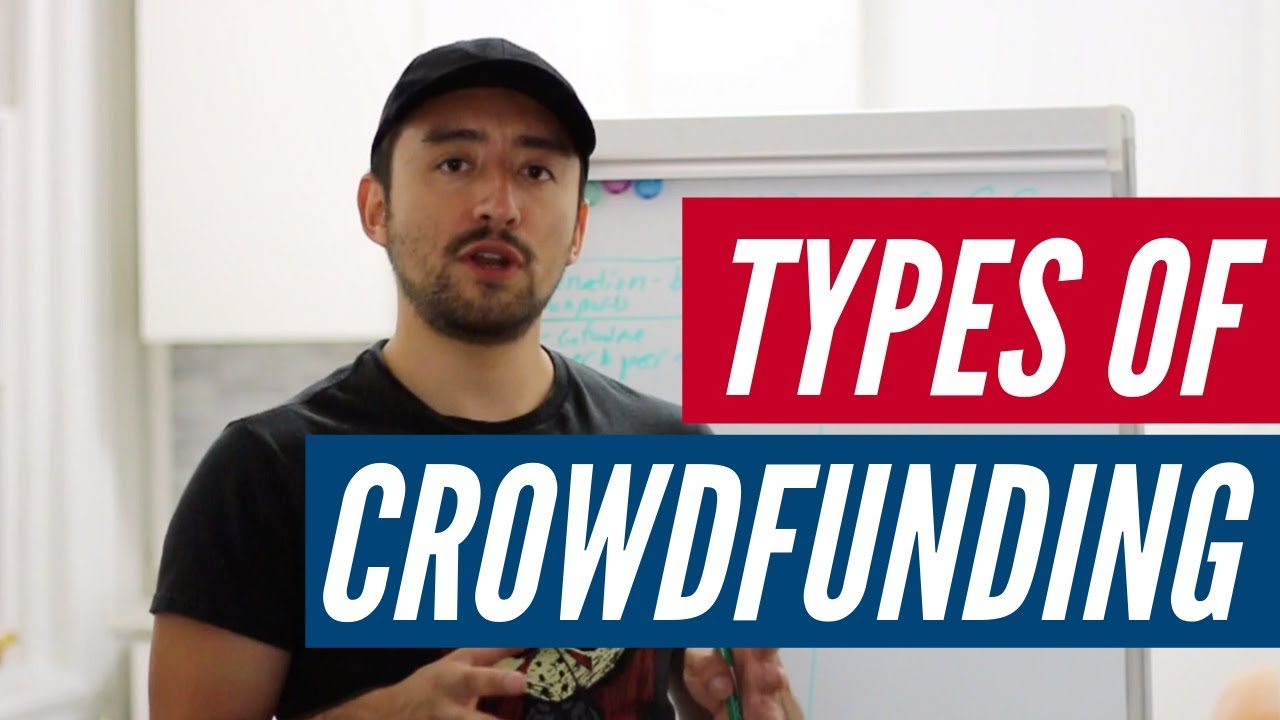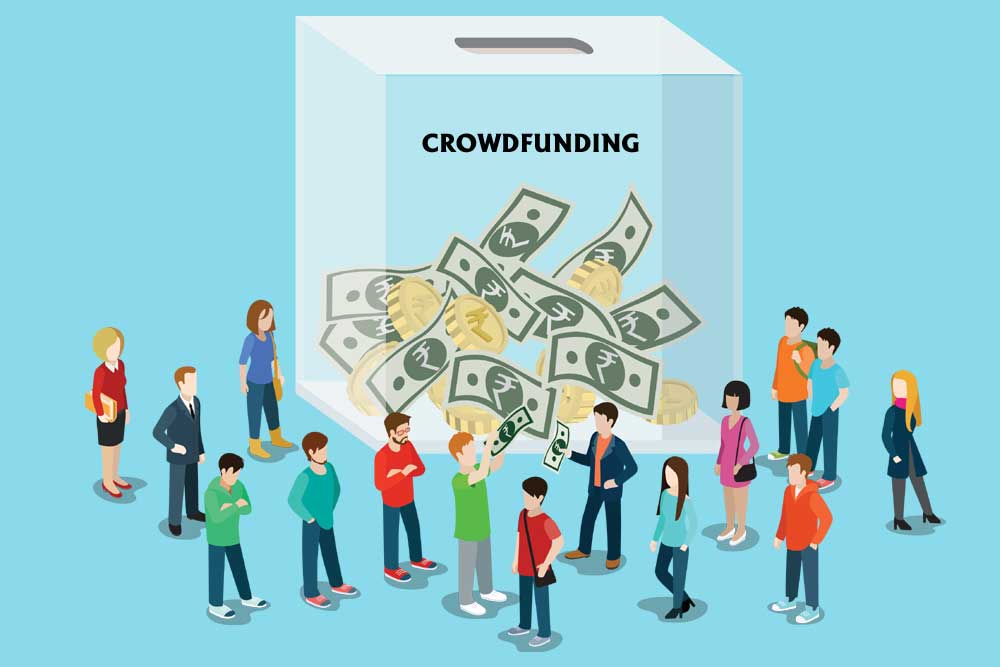Crowdfunding is the utilization of modest sums of moneyfrom a large number of people to support a new businessinitiative. Crowdfunding leverages the easy accessibility of vast networks of people via social mediaand crowdfunding websites to connect investors and entrepreneurs, with the potential to increase entrepreneurship by expanding the pool of investors beyond the traditional circle of owners, relatives, and venture capitalists.
In most countries, there are limits on who can fund a new firm and how much they can give. These limitations, like the restrictions on hedge fund investment, are intended to safeguard naïve or non-wealthy investors from putting too much of their funds at risk. Because so many new enterprises fail, investors run a great risk of losing their money.
Crowdfunding has enabled businesses to raise hundreds of thousands or millions of dollars from anybody who has money to invest. Crowdfunding allows anyone with an idea to present it to a group of eager investors.

The 4 Types of Crowdfunding Explained (and Which is BEST)
Benefits Of Crowdfunding
Crowdfunding allows individuals and businesses to raise funds by reaching out to a large, public audience. When compared to traditional routes, it can help you acquire funding more swiftly and efficiently. This can be advantageous for firms that would otherwise struggle to secure finance, whether it is for a creative startup or a non-profit.
Donors (or crowdfunders) may give valuable input on any project as well as help you with your marketing efforts. Crowdfunding allows you to validate your concept far sooner than traditional finance methods. Crowdfunding systems, in particular, allow crowdfunders to individually invest in a project at a variety of pricing points.
The Types Of Crowdfunding
Donation-Based Crowdfunding
Donation-based crowdfunding is a sort of crowdsourcing in which large sums of money are collected without providing anything in return to the investors. This type of crowdsourcing is widely employed for charitable and social objectives.
When you put up one of these campaigns, they normally endure for around 1-3 months before financing runs out. The majority of donation-based crowdfunding initiatives seek contributions of $10,000 or less, which is important because you will not be contributing anything in return.
Rewards-Based Crowdfunding
The most popular type of crowdfunding available to companies is rewards-based crowdfunding. While this type of crowdsourcing is similar to donation-based crowdfunding, the primary distinction is that you will provide multiple levels of rewards to investors based on their pledge amounts.
If a person pledges $50, you may send them a copy of the product after it is released. If a person commits $5,000 or more, they may be given the title of co-developer of the project, as well as certain other benefits. Most rewards-based crowdfunding projects will provide at least three reward tiers from which investors may choose. These campaigns are nearly typically utilized for genuine items that require money in order to be completely developed. A rewards-based crowdfunding campaign typically lasts 1-3 months and solicits contributions of less than $100,000.
Equity-Based Crowdfunding
Equity-based crowdfunding is a growing kind of crowdsourcing. In reality, this sort of crowdsourcing was made feasible by the passage of the Jumpstart Our BusinessCompanies Act in 2012, which relaxed some of the country's securities restrictions and encouraged startups to seek other sources of finance. This is the only kind of crowdfunding in which the startup is required to give investors actual stock in their firm.
When you employ equity-based crowdfunding, you may set minimum pledge amounts and investor limitations, giving you some control over how much stock you contribute. While investors may seek to see certain company documents, you will have the ability to approve or decline these requests. These initiatives typically run between 2-4 months. Because you will be contributing stock in exchange for financing, you can seek funds ranging from $50,000 to well over $100,000.
Debt-Based Crowdfunding
Debt-based crowdfunding is a type of crowdsourcing that allows you to raise large sums of money without giving up any stock in your company. In many situations, these campaigns will seek hundreds of thousands of dollars, which is why they are frequently utilized to aid firms in purchasing smaller businesses or financing a merger transaction. This form of crowdsourcing is comparable to taking out a loan. In exchange for their money, investors typically need a legally enforceable promise to repay the amount given to you within a particular time frame.
While it is conceivable that no interest may be charged on the financing, there are occasions when a tiny interest rate will be charged, which you should be aware of before considering debt-based crowdfunding. This crowdsourcing is more advantageous than a traditional loan since the interest rates are substantially lower. The usage of online platforms to enable the exchange also helps to eliminate the time spent waiting for loan approval. You are unlikely to be asked to repay the loans until your firm generates revenue. Typically, a debt-based crowdfunding campaign lasts 4-5 weeks.
Royalty-Based Crowdfunding
Royalty-based crowdfunding is a type of crowdfunding in which funders get a lesser share of the money generated after the enterprise or project is profitable enough to produce cash. For example, a firm working on building a smartphone app may require some funds to complete development. After the app is launched, any campaign backers will receive a share of the app's earnings.
The major distinction between shareholders and royalty-based crowdfunding participants is that supporters only get royalties depending on sales of the product or concept in which they invested. If you wish to launch one of these campaigns, you may ask for anything from $5,000 to $250,000, depending on the purpose of the campaign. These initiatives are usually available for 30-60 days.
Conclusion
Donation-based crowdfunding is the greatest answer for the vast majority of crowdfunding demands. There are no onerous prerequisites for starting a donation-based campaign, and there are no significant wait times to collect the funds you've raised. And, unlike other types of crowdsourcing, donation-based means you never have to pay back the money.
Furthermore, individuals like supporting causes, beliefs, and other people with whom they identify—we can all agree that it feels good to do good. Sign up now and begin your campaign to discover how soon you can gather the funds you require.
Who Uses Crowdfunding?
Those looking to raise equity: can use a crowdfunding platform to pitch their idea/business and raise money for start-ups or established businesses by selling shares in the company. Those looking to raise debt: can use a crowdfunding platform to pitch their idea/business and raise money for start-ups or established businesses by selling debt.
Can I Handle An Equity Crowdfunding Process Myself?
No. You will need to hire an intermediary to help you with the procedure. If you do not, you will have violated the equity crowdfunding regulations and will be penalized, including for exceeding the 50 shareholder limit.

